TheAcademy of Fine Arts in Carrara has been working on an ambitious project for about two years: restoring the monumental plaster sculpture depicting Napoleon I in the guise of Mars the Peacemaker created by Antonio Canova (Possagno, 1757 - Rome, 1822).
It is one of the most important works in the collection and certainly the most impressive: taken from the cast along with four other specimens now preserved in Possagno, Rome, Milan and Naples, the sculpture was donated by Canova to the Academy in 1810, along with the portrait of Madame Mère, as a pledge of the mortgage on some of the marbles purchased by the sculptor.
Like the other works in the collection, the monumental effigy of the emperor suffered the controversial events of the post-World War II period: in the 1960s, the sculptures were hospitalized in an unhealthy storage facility that caused devastating damage to their surface, volumes and structure; unfortunately, some were completely lost. The Napoleon I in the guise of Mars the Peacemaker was also badly damaged: the fingers of the right hand holding the globe, the above statuette of Winged Victory, the sword, the spear and part of the left calf were destroyed, as well as its entire structure compromised.
In the 1980s, the Superintendency of Pisa and the Academy decided to carry out a major recovery of the important collection to avoid its total loss. Many works were thus recovered and well reassembled, but the Canovian Napoleon did not have the same fate. Although it was carried out to restore the sculpture’s integrity, the restoration was conducted with erroneous criteria that profoundly compromised its structure and structural stability.
Like the other four specimens, the sculpture was made by Canova’s trainers in several dismountable parts, following a system of assembly well thought out by the artist; it then arrived in Carrara and remained so until its first restoration, when the legs resting on the pedestal and the part above the abdominal torso were cemented together and an invasive iron structure was also inserted to try to correct to the defect of assembly. A second restoration aimed at restoring the original characteristics of the model was therefore considered, but the intervention was extremely complicated, as to proceed it was necessary to restore the work to its pre-restoration state, not without some difficulty and risk.
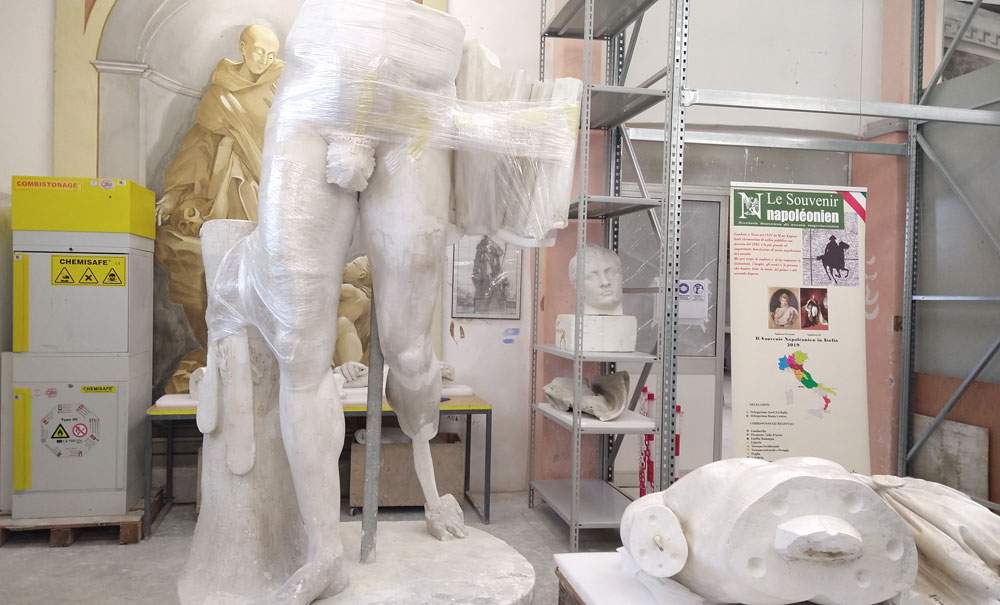 |
| Canova’s Napoleon, workshops of the Academy of Fine Arts of Carrara |
Now the Academy of Fine Arts of Carrara with its President Antonio Passa and Director Luciano Massari intends to undertake this difficult challenge that will take a long time. These days the final design has begun and the statue has been placed in an equipped area of the restoration laboratory. In-house restorers from the Academy, Professor Luana Brocani and Professor Carlo Sassetti, will be in charge of the project, and they will carry out a careful analysis and in-depth study of the sculpture’s deteriorating condition in order to define the method of intervention and then proceed to dismantle the reconstructions and the metal support, recompose and reintegrate the missing parts. The objective will therefore be to return the statue, the only one among the five existing plaster copies, to its original structure that can be disassembled into nine parts.
The ABAP Superintendency of Lucca and Massa Carrara, with which the Academy collaborates for the protection of its heritage, will be responsible for judging and approving the project. In addition to the Restoration teachers, other teachers will be involved in the entire restoration operation, as well as professionals from outside the academic institution for what concerns technical and scientific contributions necessary for the expansion of knowledge and the proper execution of operations related to the structural aspect.
New technologies will be used, such as three-dimensional scanning taken from one of the already restored copies for a comparison of the data with the current one, and 3D prototyping of a study and comparison model, which is necessary to re-establish exactly the original appearance and reconstruct the missing parts. All these operations will be carried out by the Academy with its own resources and in-house faculty.
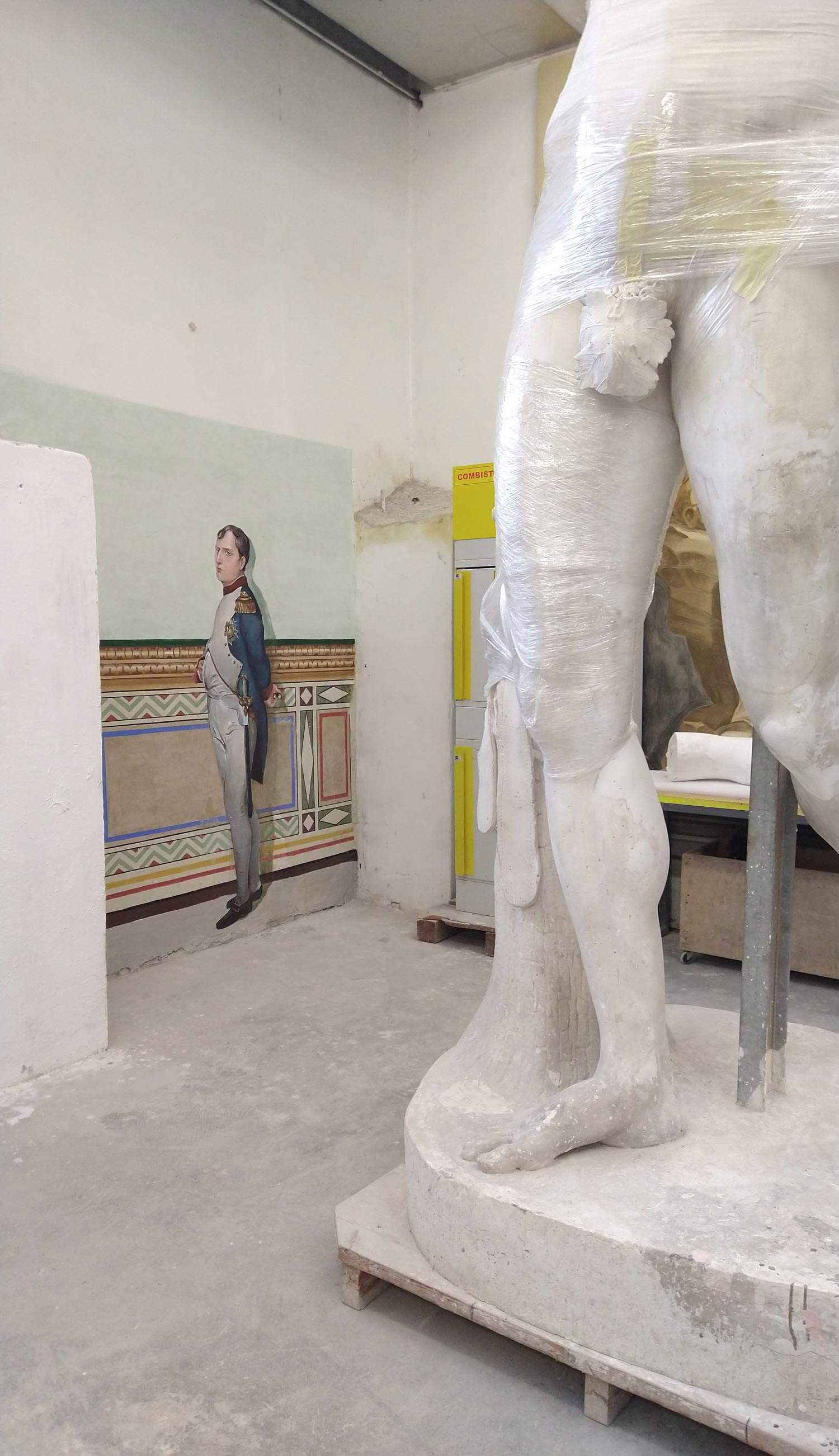 |
| Canova’s Napoleon, workshops of the Academy of Fine Arts of Carrara |
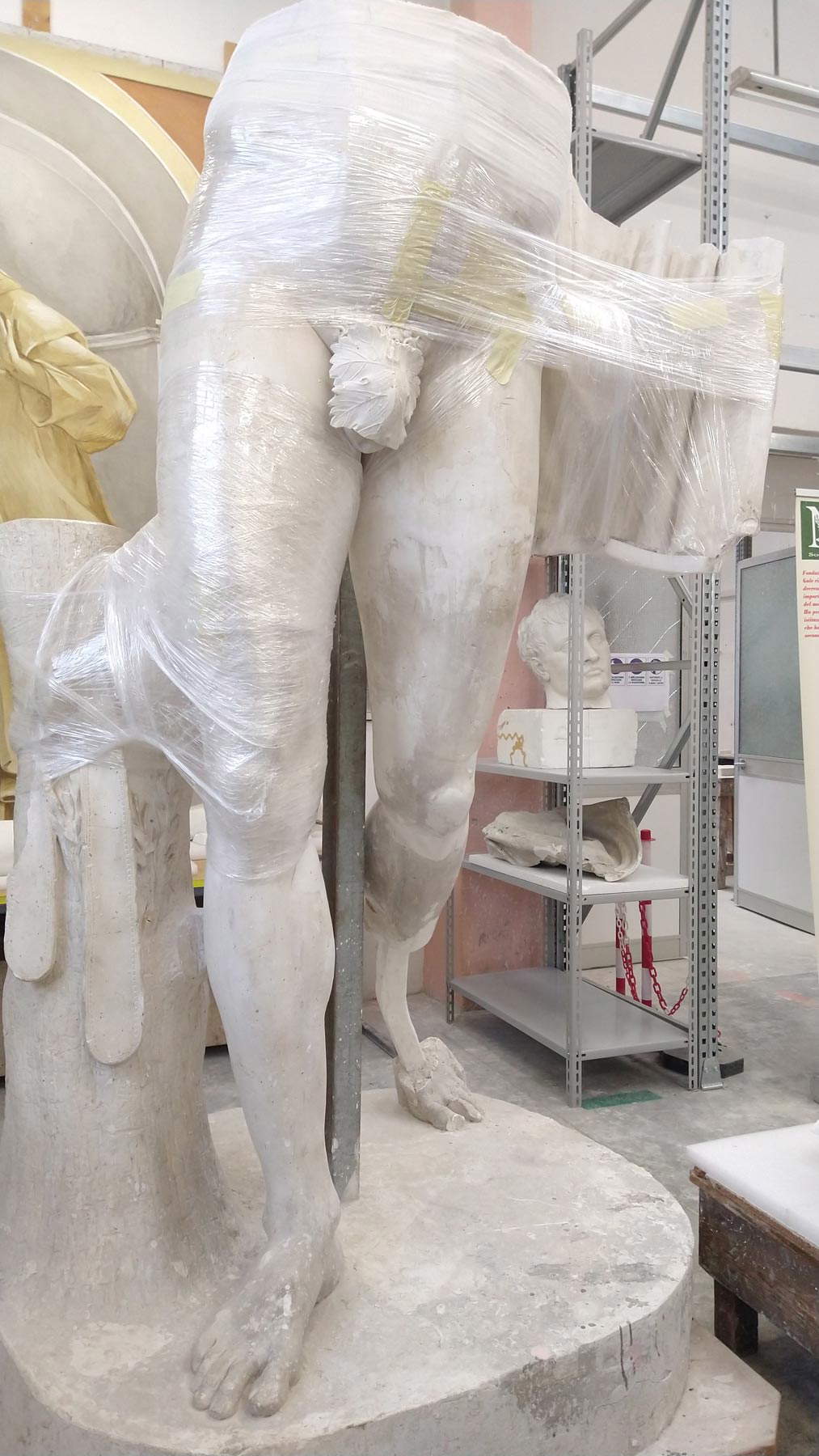 |
| Canova’s Napoleon, workshops of the Academy of Fine Arts of Carrara |
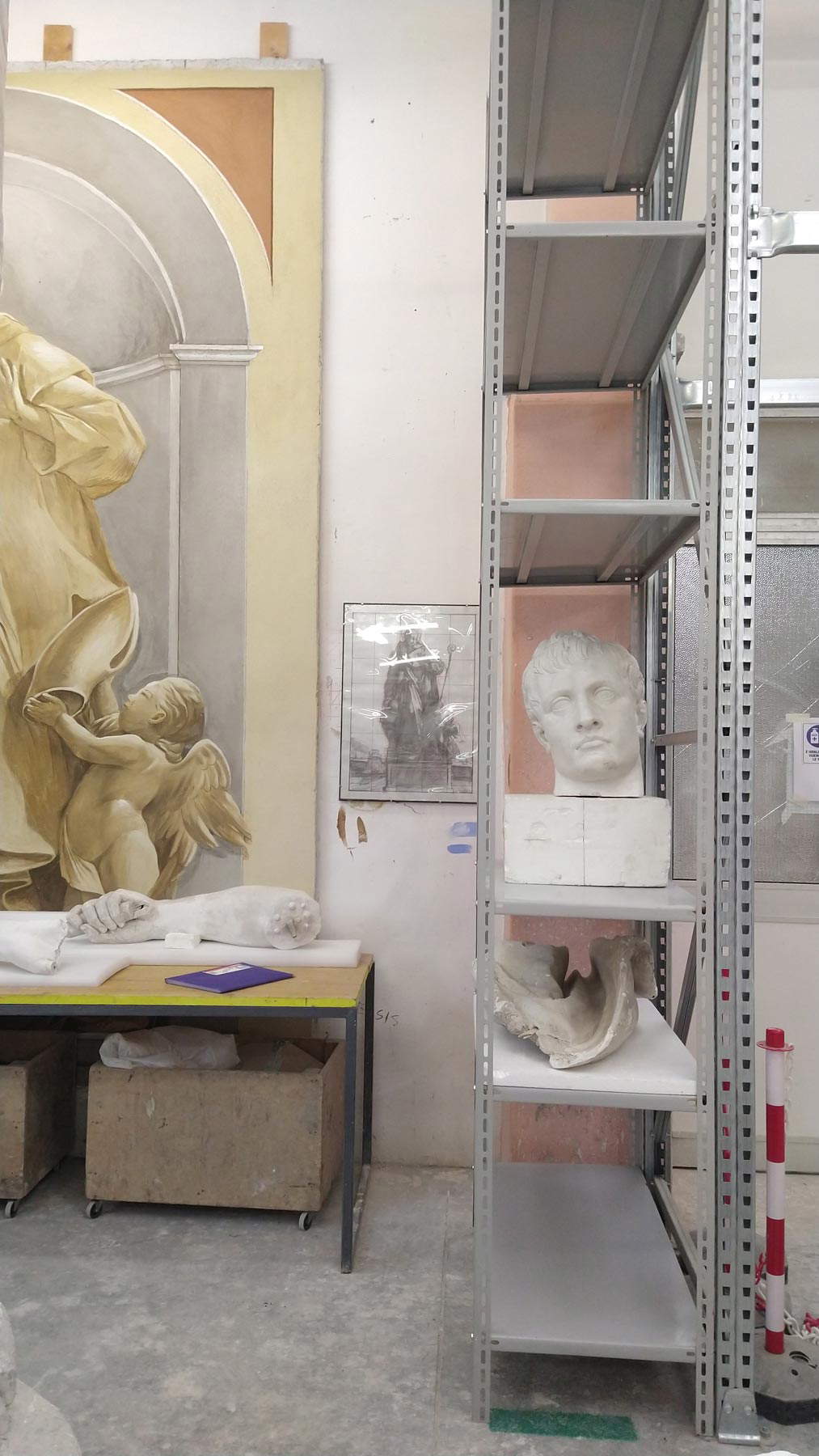 |
| Canova’s Napoleon, workshops of the Academy of Fine Arts of Carrara |
Despite the difficulties of the period, anintensive awareness campaign aimed at institutions in the area was launched, which led to obtaining financial support from the Fondazione Cassa di Risparmio di Carrara, the Municipality of Massa, the mayor of the Municipality of Carrara (personally), the Rotary Club of Carrara and Massa, the Lions Club Massa Carrara Apuania, and the promise of a financial contribution from the Rotary Club Marina di Massa Riviera Apuana.
Interest, promotion of the event, and a significant financial commitment come from the project’s main partner, the French association Le Souvenir Napoleonien Fondation Napoléon, and various S.N. Members: the program will be part of the celebrations, starting May 5, 2021, of the 200th anniversary of the emperor’s passing.
Finestre Sull’Arte will also participate in the project: with its publisher Danae Project, it will launch a crowdfunding campaign aimed at its readers. Readers of Finestre Sull’Arte will be able to support the restoration through donations (the current account, in the name of the Academy of Fine Arts, is active. More info soon).
Due to pandemic restrictions, the Academy of Fine Arts of Carrara has been forced to postpone events planned for the celebration of the 250th anniversary of its founding, such as the exhibition dedicated to Giovanni Antonio Cybei, a leading sculptor of the artistic scene of the second half of the 18th century and the Academy’s first director. However, the organization of the program has continued, and added to the latter is the major restoration work that will bring the Napoleon model back to the Prince’s palace in its newfound integrity, alongside the other Canovian works already restored. A series of events planned for 2022 will celebrate the work’s return, coinciding with the two hundredth anniversary of Antonio Canova’s death.
The Academy has never stopped devoting part of its scientific and educational activities to the recovery and study of the sculptures in the Gipsoteca. The goal is to achieve the musealization of the Gipsoteca; the Municipality of Carrara has made Palazzo Rosso available to house this extraordinary collection.
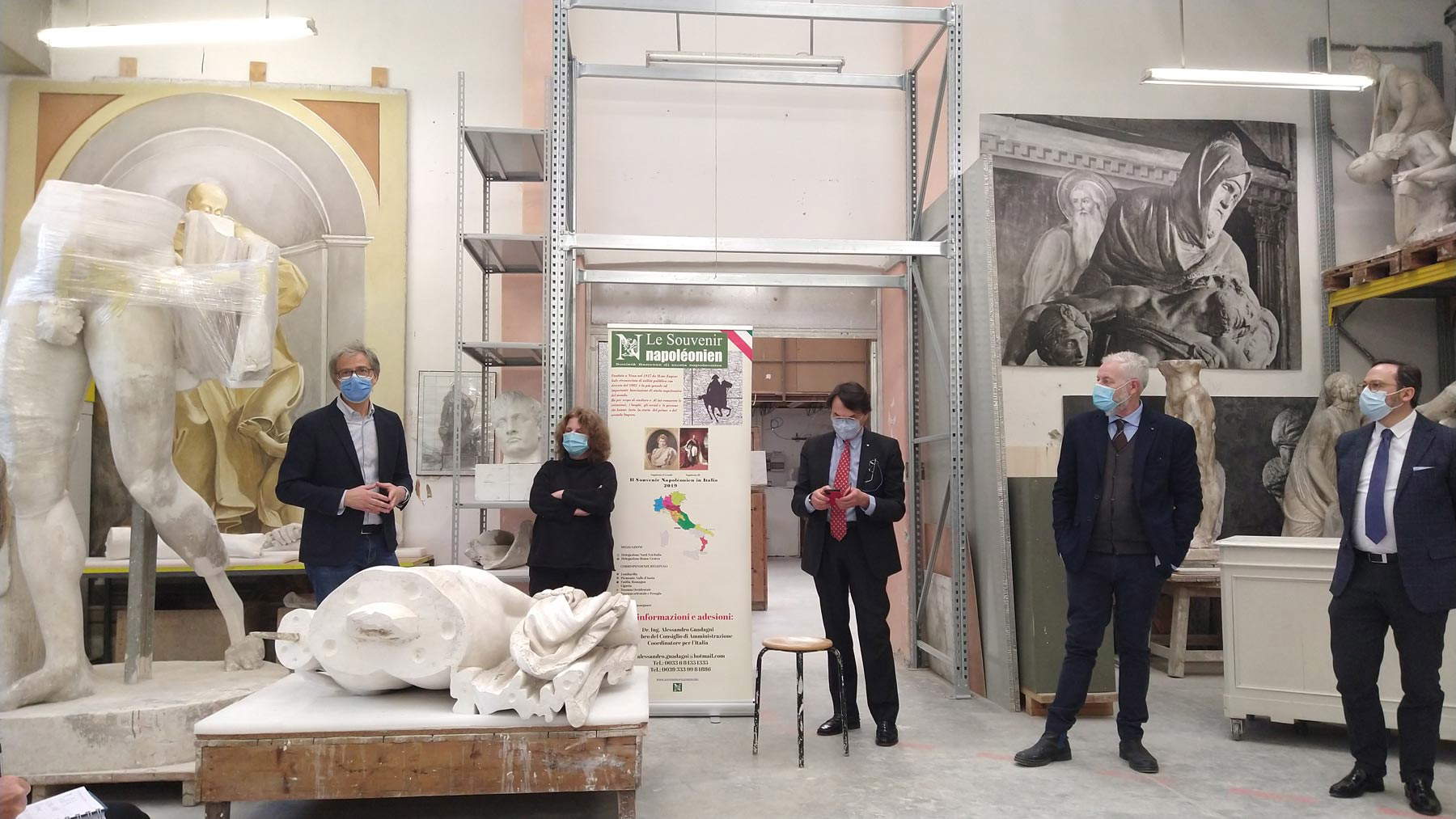 |
| Canova’s Napoleon, workshops of the Academy of Fine Arts of Carrara |
“This is a very important moment for the Academy because it is a great restoration, even a complex one,” stressed Academy director Luciano Massari. “We have completed the scanning of the Napoleon from the Pinacoteca di Brera and it is our intention (we have already engaged in a dialogue with Possagno) to implement new scans and new investigations on the first model of the sculpture, precisely to reconstruct the missing parts of this Accademia specimen. This restoration is also a source of pride because we are doing it in-house. Once the restoration is finished, if the Superintendency will allow it, we would like to tour the work safely; if this Canova sculpture travels the world, it would be prestige for us, for the city, and for the Academy, which is based on tradition but also on new technologies.”
Regarding funding, Alessandro Guadagni of Le Souvenir napoléonien Association said, “We had an initial budget of 46,000 euros and so far we have raised 43,500 euros.”
On the restoration, Professor Carlo Sassetti added, “We have to take apart everything that has been done: it has always been a difficult project both technically and economically to carry out. I want to point out that we have always worked and will work in close relationship with the Superintendence, for the protection of the heritage. We have made a preliminary study to make an assessment of the cost and implementation of the restoration and also to think about building suitable cases in anticipation of an eventual and desirable transfer for exhibitions and loans. This restoration is something we have been aiming at for a long time; it is a major commitment. For the Academy students, it will be a demonstration site; they will not intervene directly.”
 |
| Carrara, presented the restoration of Canova's Napoleon. Finestre Sull'Arte also contributes |
Warning: the translation into English of the original Italian article was created using automatic tools. We undertake to review all articles, but we do not guarantee the total absence of inaccuracies in the translation due to the program. You can find the original by clicking on the ITA button. If you find any mistake,please contact us.